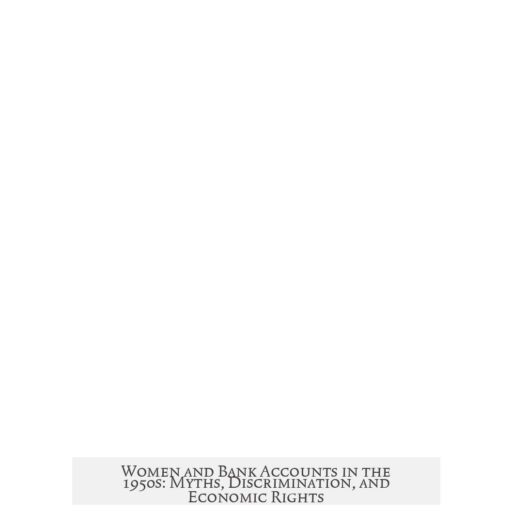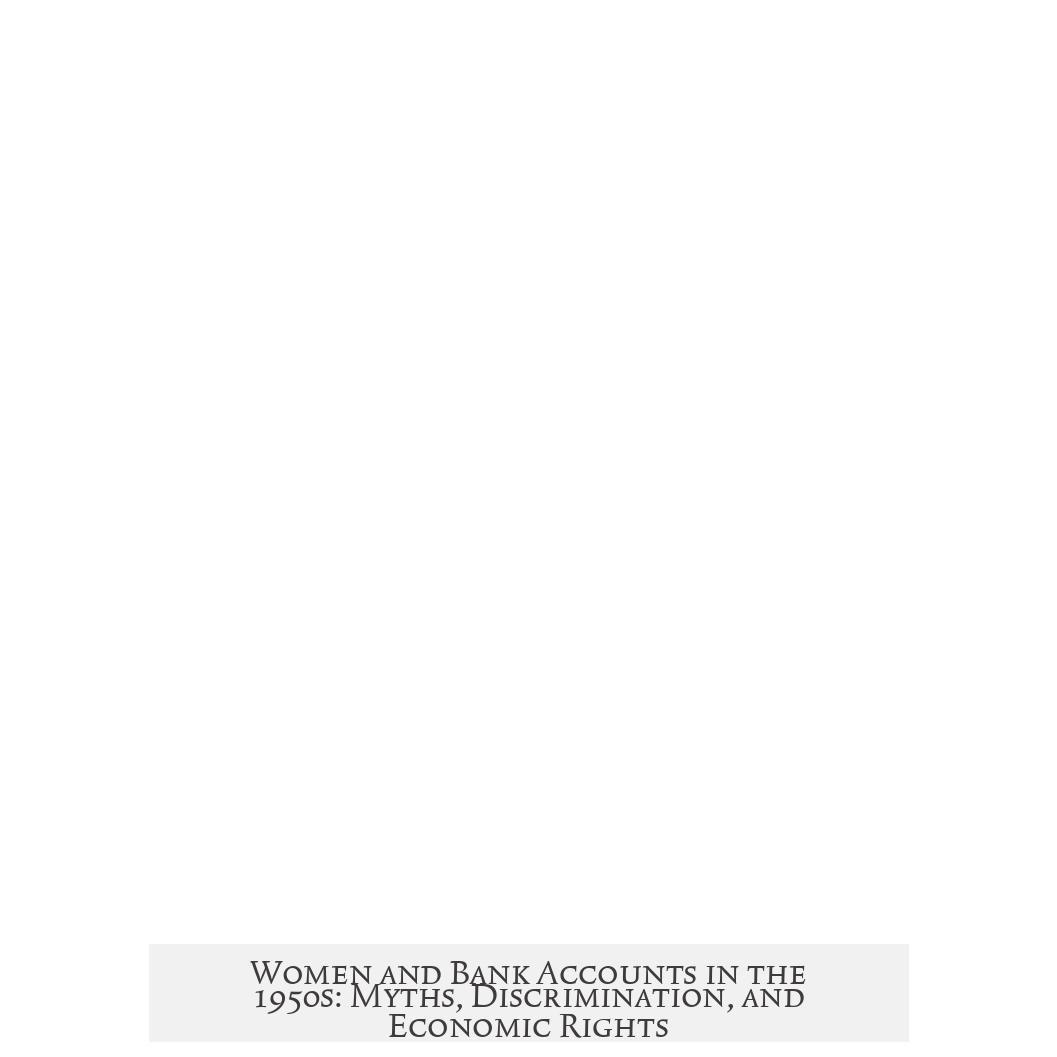Women could open bank accounts in the US during the 1950s, but often faced discrimination in credit access and financial services. It was legally possible for women to hold bank accounts or apply for loans. However, banking institutions imposed biases that limited women’s financial independence and access to credit. These discriminatory practices were widespread enough to affect women’s willingness to seek loans and credit during that era.
Legally, no federal law explicitly prohibited women from opening bank accounts or obtaining credit during the 1950s. Contrary to popular myth, it was not illegal for women to get loans prior to 1974. Women did have the right to hold bank accounts in their names and apply for credit. Yet this formal ability did not guarantee equal treatment in practice.
The key issue was discrimination—both explicit and implicit—in how banks and lenders approached female applicants. Women, especially married women, often found it difficult to receive credit in their own names. Lending policies frequently favored men or required women to obtain approval or co-signatures from male relatives, typically husbands.
- Single women found it challenging to secure mortgages or loans.
- Married women’s income was commonly excluded from loan applications.
- Women were pressured to reapply for credit after marriage, whereas men faced no such requirements.
- Some lenders even demanded statements about women’s use of birth control, reflecting concerns about pregnancy disrupting repayment.
Anecdotal evidence highlights these barriers vividly. For example, Representative Pat Schroeder, who entered Congress in the early 1970s, was unable to get an American Express card in her own name. Instead, she was only offered a secondary card linked to her husband’s account with a very low credit limit. Such experiences contributed to the push for the Equal Credit Opportunity Act (ECOA) of 1974, which aimed to end discrimination in credit.
Other stories reveal the stress and difficulty women faced just in everyday financial transactions. One divorced professional woman struggled to establish credit in her name after her divorce. Her situation underscored how deeply banking practices tied women’s financial identities to their husbands, limiting their autonomy.
Studies and hearings in the early 1970s further documented these patterns. The National Commission on Consumer Finance and groups like the National Organization for Women and the ACLU gathered data showing that women often faced different—and harsher—standards when applying for loans. Married women’s incomes often went uncounted in joint applications, severely limiting household borrowing capacity. Separated or divorced women met significant obstacles when re-establishing credit, harming their financial stability.
Institutional acknowledgment of this problem came from significant players such as the American Bankers Association president, who admitted the existence of discrimination. However, many economists and bankers argued about the extent of discrimination, stating that credit denial was not profit-maximizing behavior if taken too far. Empirical studies offered mixed results: some found no overall difference in approval rates between men and women, while others confirmed that discrimination existed in specific loan categories and through informal barriers.
One major factor complicating measurement of gender discrimination in lending is “application avoidance.” Women often did not apply for credit because they anticipated rejection. This avoidance behavior reduced the observable rate of loan denials but indicated a significant hidden barrier. Research decades later still found that many women firms refrained from applying for credit precisely due to expectations of denial.
The situation improved gradually after the passage of the Equal Credit Opportunity Act in 1974. The ECOA explicitly prohibited credit discrimination based on sex and marital status, requiring lenders to treat all creditworthy applicants equally. Later amendments expanded protections to cover race and age. This law opened the door for greater financial autonomy among women, though historical effects of prior discrimination continued to linger.
| Aspect | 1950s Situation | Post-1974 Changes |
|---|---|---|
| Bank Account Ownership | Legal but socially constrained; women could open accounts but faced hurdles. | Unchanged; focus on credit equality rather than account ownership. |
| Loan and Credit Access | Widely discriminated; loans often denied or required male co-signers. | ECOA banned sex and marital status discrimination in credit. |
| Married Women’s Credit | Income often ignored; credit tied to husbands. | Women’s individual creditworthiness recognized legally. |
| Social Attitudes | Pregnancy concerns factored into credit decisions; birth control statements sometimes required. | Legally prohibited discriminatory questions. |
In summary, while women could technically open bank accounts in the US during the 1950s, their access to credit was restricted by widespread discrimination and social norms. Banking policies often treated women as financially dependent on male relatives, limiting their economic independence. Legal reforms beginning with the Equal Credit Opportunity Act of 1974 made crucial strides toward ending these discriminatory practices, although challenges remained.
- Women legally could open bank accounts in the 1950s.
- Widespread discrimination hindered women’s access to credit and loans.
- Married women’s incomes were often excluded from loan considerations.
- Credit applications from women frequently faced higher scrutiny or rejection.
- The 1974 ECOA law was a key milestone banning sex-based credit discrimination.
- Application avoidance by women is a major factor masking full discrimination effects.
Could Women Open a Bank Account in the US in the 1950s?
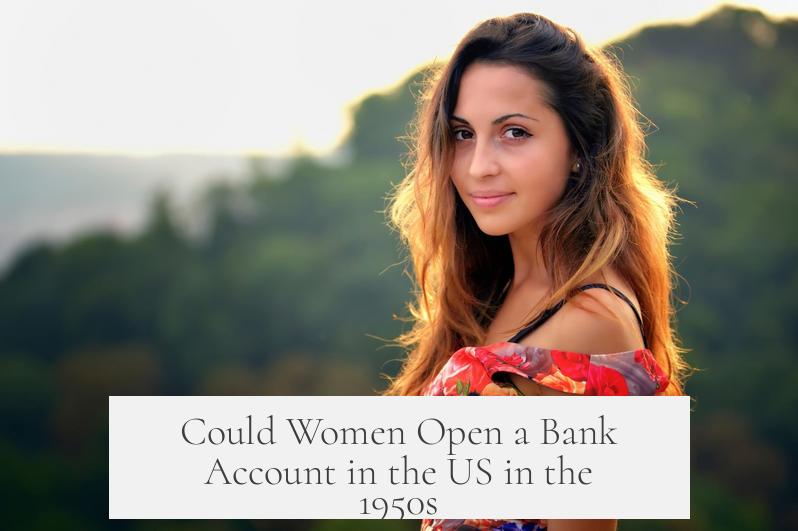
Short answer: Yes, women could open bank accounts and get loans in the 1950s—but not without hurdles, hoops, and some seriously outdated attitudes attached. Unlike the myth that women were flat-out forbidden from having bank accounts or credit before landmark laws in the 1970s, the reality is a bit more complicated and, frankly, a bit infuriating.
Let’s unpack this curious part of American financial history—where possibility meets prejudice—and get to the heart of what banking looked like for women in the 1950s.
The Myth That Women Couldn’t Get Credit Before 1974
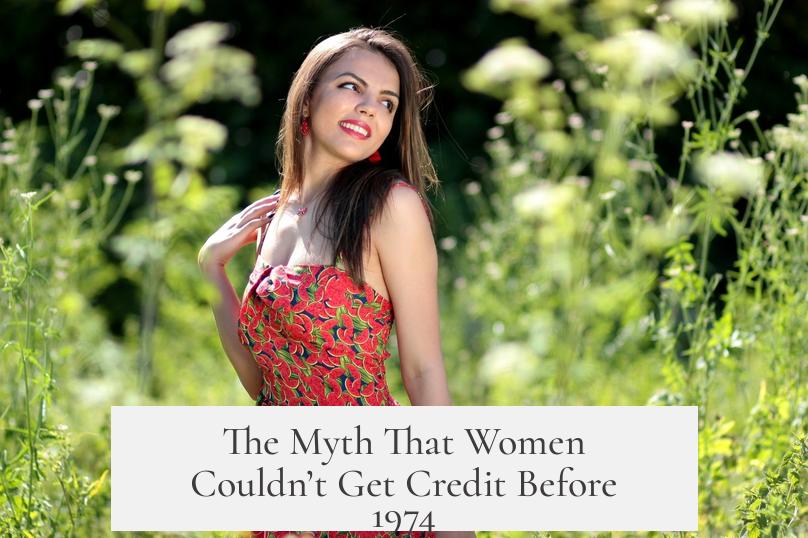
First up, if your source claims women were legally barred from obtaining credit or opening accounts before 1974’s Equal Credit Opportunity Act (ECOA), you might want to toss that source out—or at least give it a skeptical once-over. It was never literally illegal for women to open bank accounts or get loans in the 1950s. However, legality and practice weren’t exactly the same.
The ECOA, passed in 1974, was the first federal law to prohibit discrimination based on sex and marital status when it came to credit. This law made it illegal for banks or lenders to deny women credit just because of their gender or marital status. Before ECOA, the legal framework was insufficient to protect women from discrimination, allowing banks to impose barriers even if they couldn’t outright refuse service on legal grounds.
How Discrimination Played Out Despite Legal Possibility
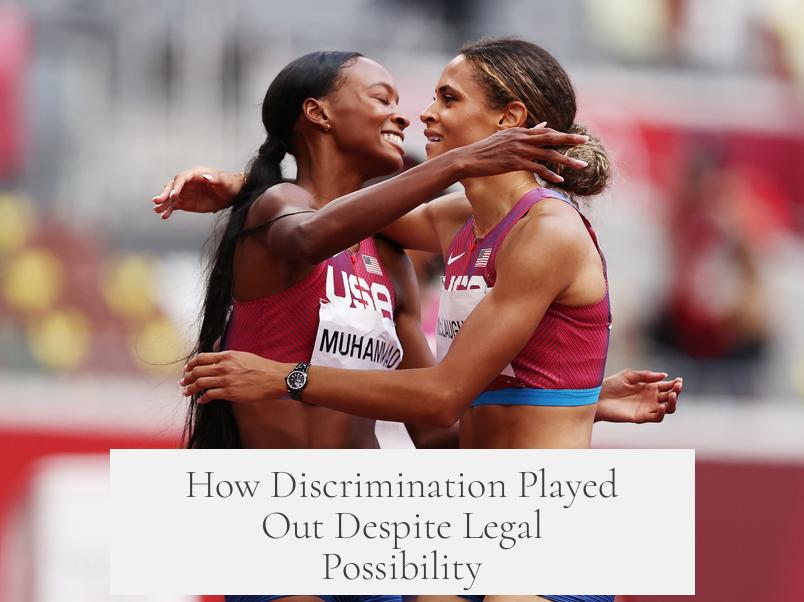
Picture this: You’re a freshly divorced woman in the 1950s trying to get a loan or open an account. The bank clerk asks, “But who will guarantee this loan? Your ex-husband?” It was a typical scenario. Many married women found their financial identities tied to their husbands’. Opening a bank account “in your own name” wasn’t as straightforward as it sounds.
Lindy Boggs, a member of the committee that pushed for the ECOA, revealed some eye-opening anecdotes. Representative Pat Schroeder tried for a credit card in her own name only to be told she’d get a second card linked to her husband’s account, capped at around $1,000—that’s roughly “one trip to Colorado and back,” as Pat wryly noted. These stories spotlight the extra layers of hassle women faced in managing money independently.
More troubling: banks sometimes refused to count a woman’s income when couples applied for loans jointly. This didn’t just hurt women but ironically made it tougher for married couples—imagine a scenario where the household income is big, but only one half of the couple’s earnings counted because it was the husband’s only. That kind of partial credit assessment sounds absurd today but was common practice.
Discrimination Beyond Just Denial

Banking discrimination in the 1950s was often subtle, sneaky, and sometimes intrusive. Some lenders went as far as requiring statements on a woman’s use of birth control, fearing pregnancy might impact her repayment capabilities. Yes, birth control information was apparently in the fine print of loan consideration.
Divorced women or those separated faced another layer of difficulty. They had to rebuild credit almost from scratch, often without access to the same financial tools men took for granted.
Was Discrimination Universal? Not Exactly

Here’s the catch—while discrimination was real and widespread enough to hinder many women, it wasn’t a blanket rule applied by all banks. Some institutions were more progressive—or simply more pragmatic—recognizing women as creditworthy clients. A notable 1970s study by Peterson provided data showing that aggregate loan approval rates between men and women were, surprisingly, about equal, except women even had a higher approval rate on household goods loans.
Yet, this data had a blind spot. It couldn’t measure “application avoidance”—the idea that many women simply wouldn’t apply for loans or credit because they expected rejection. This kind of invisible discrimination kept many women out of the credit market not by outright denial but by discouragement.
The Larger Context: Social and Economic Norms

In the 1950s, a woman opening a bank account or applying for credit “in her own name” wasn’t just about a signature. It was a challenge to prevailing social norms. Banks reflected society’s views: men were the breadwinners, women were expected to be homemakers. Financial independence for women was sometimes viewed suspiciously—bankers and insurers alike worried about stability and repayment risks, but also about the social order.
Consider the example of a professional woman married to a senator who faced credit denials after divorce. She had to negotiate navigating a system that conflated creditworthiness with marital status and assumed dependency.
Were Women’s Economic Rights Invisible or Simply Ignored?

It’s important to separate what was allowed from what was encouraged or made feasible. Women in the 1950s were not invisible to the banking system, but it was absolutely more difficult for them to engage financially on equal terms with men. The American Bankers Association acknowledged a discrimination problem existed. However, helpful enforcement mechanisms were very weak before the ECOA.
The full effect of such barriers wasn’t just personal; it hurt women’s economic opportunities, ability to build wealth, and even their family’s financial well-being. Imagine trying to start a business when your credit applications face more scrutiny—or being denied loans solely because you’re married, not single, and your income doesn’t “count.”
Summary: The Reality of Women and Banking in the 1950s
Yes, women could open bank accounts and get loans in the US during the 1950s. It was legal. In fact, many women managed their finances independently, contributing to everything from household management to investments.
However, discrimination in lending practices and banking was a significant obstacle. It manifested in hurdles such as:
- Credit limit restrictions tied to husbands’ accounts
- Women’s income ignored in joint credit applications
- Requirement of intrusive personal info like birth control use
- Expectations forcing divorced or separated women to rebuild credit anew
- Widespread practice of discouraging women from even applying for loans
This stacking of the deck meant that, while access was possible, it wasn’t equal or fair. Some banks were more accommodating; others reinforced the gender bias. As anecdotal stories and official hearings revealed, the fight for equal credit access became a cause for activists and legislators who eventually succeeded with the 1974 ECOA law.
So, What Can We Learn From This Historical Snapshot?
First, legality alone doesn’t guarantee equity. Even when women had the right to open accounts and get credit, social barriers distorted access. Application avoidance due to discrimination fears is a key factor in why women’s financial participation lagged.
Second, understanding these historical challenges sheds light on the roots of today’s financial gender gap. Although laws have improved dramatically, some legacies of these early biases still echo in economic disparities.
Finally, it’s a reminder of the importance of vigilance. Laws like ECOA show what targeted legal reforms can do, but without enforcement and cultural shifts, discrimination finds ways to persist. Those funny stories from the 1950s about limited credit cards and birth control disclosures may seem quaint, but they reveal the real impact of bias on people’s lives.
For Women Today: Practical Thoughts Inspired by History
If you want to appreciate your financial independence, think about the 1950s woman trying to secure a bank account without her husband’s permission. Now? Online banking, credit apps, and financial literacy resources abound. However, if you face hurdles today, the story from the 1950s warns to check if discrimination or bias lurks behind the scenes—sometimes it’s invisible but still impactful.
And to financial institutions, the echoes from the 1950s serve as a cautionary tale: transparency, fairness, and inclusive policies aren’t just moral necessities—they’re good business.
“Representative Pat Schroeder’s experience with credit cards was a small trip that sparked a movement. Small barriers often lead to big changes.”
Isn’t it fascinating how an everyday financial service—even just a credit card—can reflect societal values and ignite change? Could today’s tiny hurdles for marginalized groups be the seeds for tomorrow’s equal opportunity campaigns? The lesson from the 1950s is: keep pushing for fairness, because no legal right is meaningful without access and respect.
In the end, the 1950s banking world for women was a complex mix of possibility shadowed by prejudice. Understanding it fully enriches our grasp of economic history and inspires ongoing efforts toward equality.
